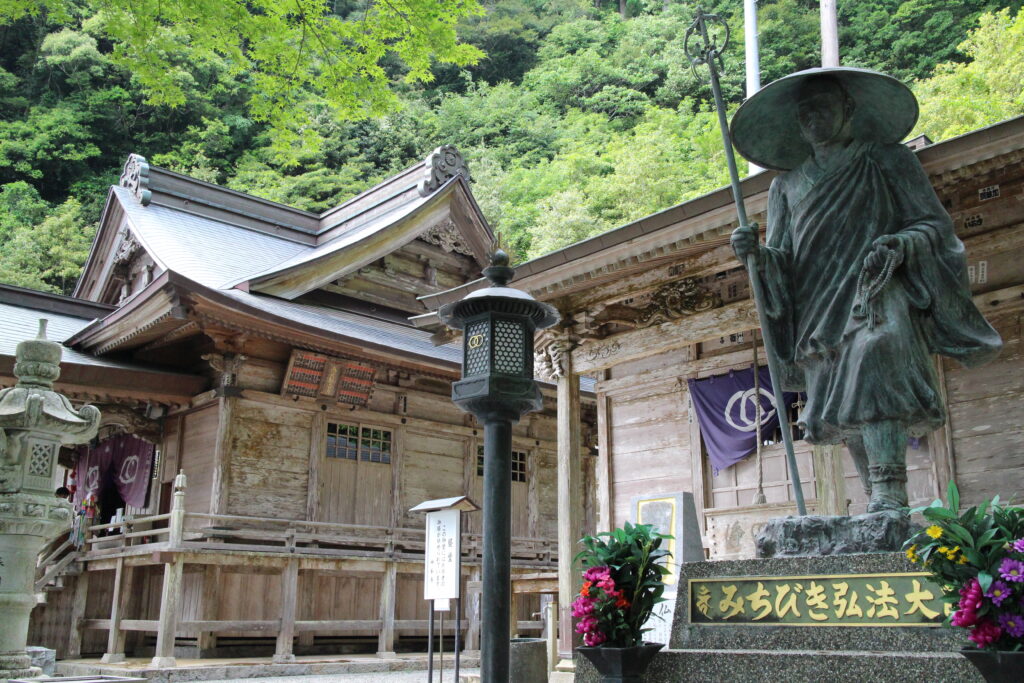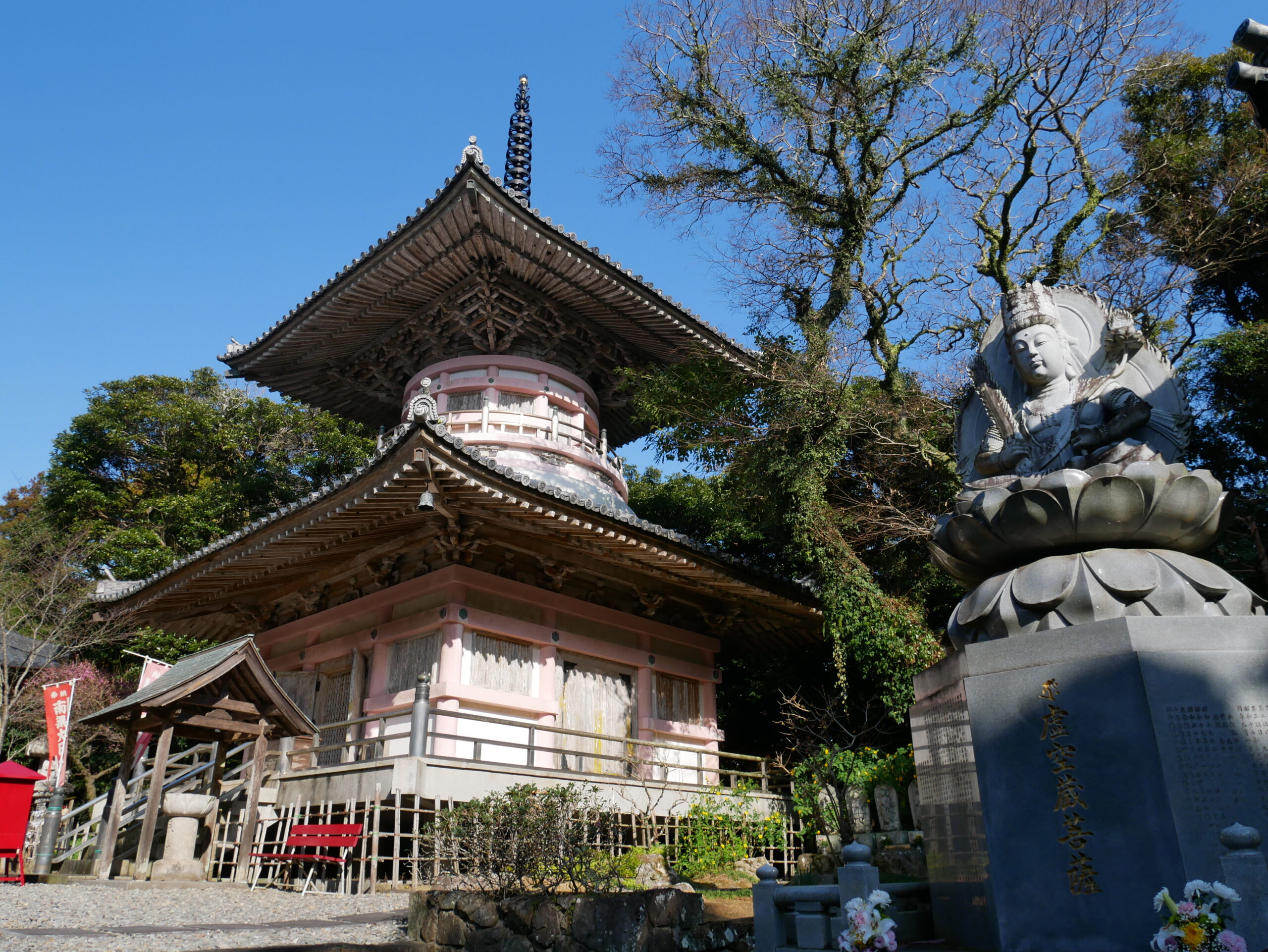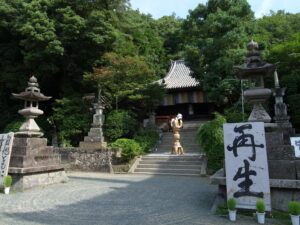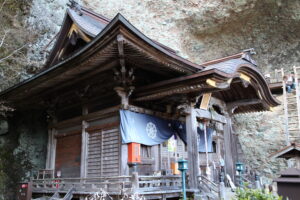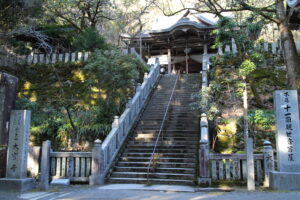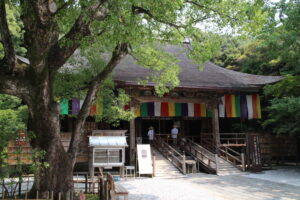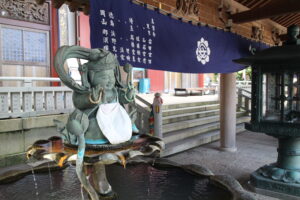Konomine-ji, the Temple of the Divine Peak, clings to a mountainside 450 meters above the Tosa Bay. The mountain, site of tales and traditions that predate Buddhism’s arrival in Japan, remains a striking example of the combined practice of Buddhism and Japan’s native Shinto religion.
Konomine-ji’s Origins and History
The prominent peak that gives Konomine-ji its name has been revered since since ancient times. Records from the Konomine Shrine, a Shinto establishment just above the temple near the summit (about 500 meters), claim that the shrine was established by Empress Jingu as a site of worship to Amaterasu, the Sun Goddess, in the 3rd Century. If true, this would make Konomine Shrine one of Japan’s oldest. In the 8th Century, the Buddhist saint Gyoki carved an image of 11-Faced Kannon, the Bodhisattva of Compassion, and enshrined it alongside the shrine’s native deities. Kukai is said to have built a hall to enshrine the image of the bodhisattva in 809, which was expanded over time into the expansive temple grounds present today.The shrine and temple’s history is an excellent example of the relationship between Shinto and Buddhism for much of Japanese history. Temples were built on sites considered holy in pre-Buddhist times, leading to an inextricable physical, spiritual, and philosophical relationship between the two streams of Japanese religion. In the 19th Century, however, nativist ideology dominated the newly-industrialized society, leading to the separation of Shinto and Buddhism and attacks on Buddhist establishments throughout Japan. This movement was particularly forceful in Kochi, leading to the destruction of many temples. Konomine-ji was abandoned during this period, and didn’t return to temple status for almost a hundred years. This is why, as you walk up from the parking lot, you will see two separate entrances, one a Buddhist-style gate and one a Shinto Torii, to what was a unified complex for centuries. For more information about the separation of Shinto and Buddhism, check out this article from Kokugakuin University.
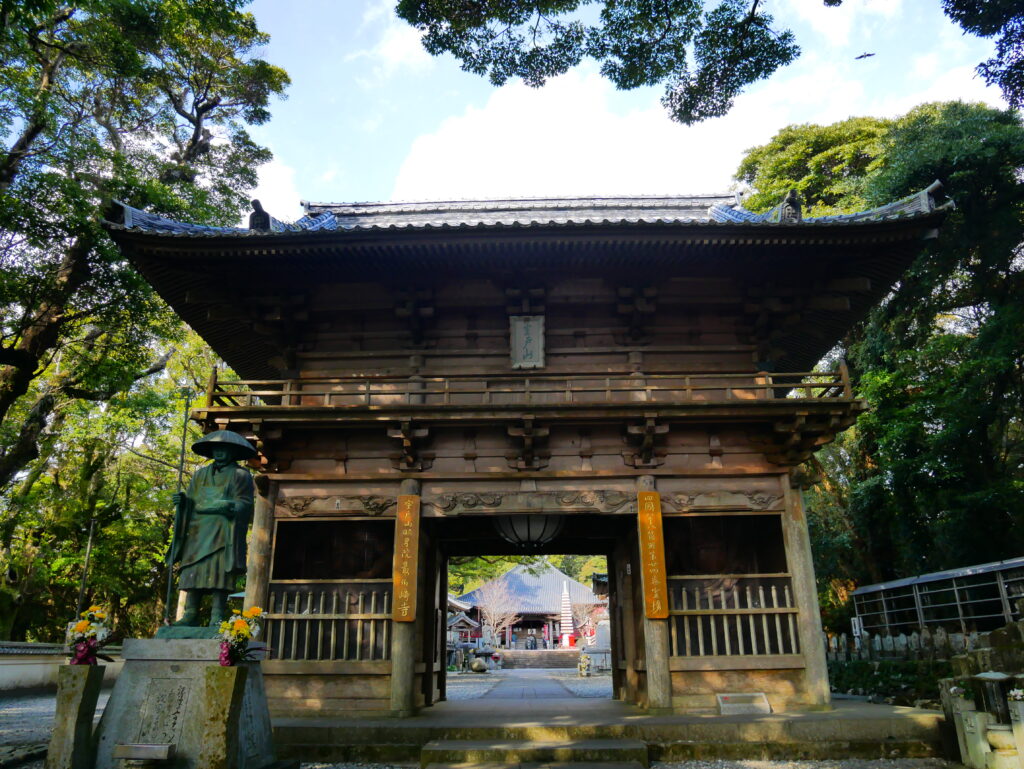
What to See at Konomine-ji and Konomine-Shrine
The path to Konomine-ji is known as one of the Henro’s steepest sections, earning the monicker mattate, “Straight Verticle,” among pilgrims. Along the way you’ll notice a number of beheaded statues of Jizo, a remnant of the anti-Buddhist movement of the 19th Century. A well-known story holds that the mother of Mitsubishi Founder Yataro Iwasaki’s mother hiked the 32-km round-trip up the mountain for 21 straight days to pray for her son’s success. Now, a parking lot just below the summit makes a more manageable approach to the temple possible with the help of a car or local taxi. Past the temple’s main gate you’ll find an impressive wisteria tree, the temple belltower, and a gurgling divine spring, whose water is said to have miraculous healing powers. The stairs beside the spring lead through an exquisite Japanese garden toward the main hall, and the Daishi hall is located nearby.From the Daishi hall, pilgrims can proceed up an impressive stone staircase toward Konomine Shrine. The grounds are home to several cedar trees of astonishing scale, as well as eerie rock formations said to emit light that serves as a guide to sailors. A trail past these boulders climbs toward the 570 meter summit, where the Sky and Sea Lookout, an observation tower with a sweeping view of the Kochi Bay, makes for a perfect post-hike picnic spot.

A Peak Experience, Past and Present
Konomine-ji is more than a temple—it’s a layered encounter with Japan’s spiritual history, where ancient myths, Shinto deities, and Buddhist compassion continue to coexist on a sacred peak. Whether you brave the mattate trail on foot or arrive by taxi, the journey offers more than scenery: it’s a walk through time. With Shikoku Tours’ experienced guide-interpreters, you’ll gain insight into the complex stories hidden in the mossy stones and sacred springs. Let us help you uncover the mountain’s meaning—step by step, shrine by shrine.
